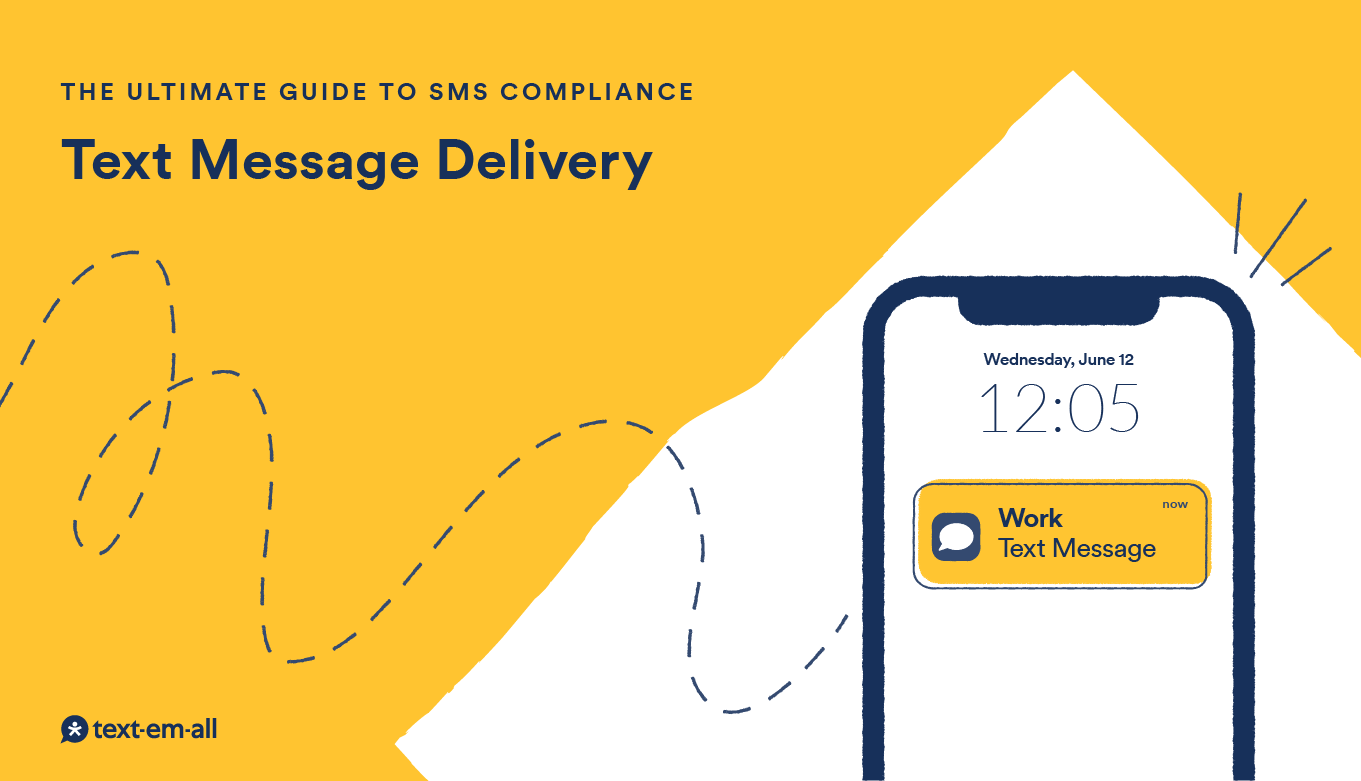Text message delivery: A journey with many steps
Understanding the journey of a text message can help you appreciate the various steps and players involved in delivering your messages. While the process might seem complex, we'll break it down into simple, easy-to-understand steps.

Step 1: From the Brand to Text-Em-All (Campaign Service Provider)
Brand (Business Customer):
You, the business customer, create and send a text message using Text-Em-All’s platform. This message could be an emergency notification, a reminder, or a job shift fill, among other types.
Campaign Service Provider (CSP):
Text-Em-All acts as your CSP. We take your message, ensure it complies with regulations, and prepare it for delivery. Our role is to provide the interface and features needed to make the process seamless while helping you stay compliant so you can focus on your communication needs.
Step 2: From Text-Em-All to a Direct Connect Aggregator (DCA)
Direct Connect Aggregator (DCA):
Once your message is ready, Text-Em-All sends it to a DCA like Twilio, Bandwidth, or Sinch. DCAs are responsible for routing your message through the most efficient and reliable paths. Aggregators also set rules to ensure content and message delivery comply with MNO requirements. The DCA may reject messages and/or block text numbers that don’t comply. They handle the heavy lifting of connecting your message to the right mobile networks.
Step 3: From the DCA to a Gateway (or Exchange)
Gateway (or Exchange):
Some DCAs directly connect to the MNOs, others might need to pass your message to a Gateway like Syniverse. Gateways act as hubs that manage the traffic of numerous messages, ensuring they are correctly formatted and ready for the final step. These Gateways also help the various MNOs connect to message recipients who are not on their networks. They play a crucial role in managing message flow and preventing bottlenecks.
Step 4: From the Gateway to the Mobile Network Operator (MNO)
Mobile Network Operator (MNO):
Finally, the message reaches an MNO like AT&T, Verizon, or T-Mobile. MNOs are the carriers that deliver the message to the recipient’s mobile phone. These carriers determine the rules that every downstream must comply with to deliver messages to their platform. For example, T-Mobile has rules that are different from AT&T regarding delivery speeds, daily volumes, and message filtering. They ensure the message is delivered promptly and accurately to the intended recipient.
Step 5: To the Message Recipient
Message Recipient:
The recipient receives the text message on their mobile phone. Depending on the nature of your message, this could be an employee, a customer, or a community member.
The Value of Each Player
- Brand: The initiator of the message, focusing on reaching their message recipients.
- Campaign Service Provider (CSP): Provides the capability to send mass messages for a Brand.
- Direct Connect Aggregator (DCA): Routes messages from a CSP efficiently through various networks.
- Gateway (or Exchange): Manages message traffic and ensures proper formatting.
- Mobile Network Operator (MNO): Delivers the message to the recipient's mobile phone.
Key Takeaways
- The journey of a text message involves multiple steps and key players.
- Each player has a specific role to ensure the message is delivered efficiently and compliantly.
- Understanding this process helps you appreciate each player's contribution to delivering your messages and understand why bottlenecks can occur.













